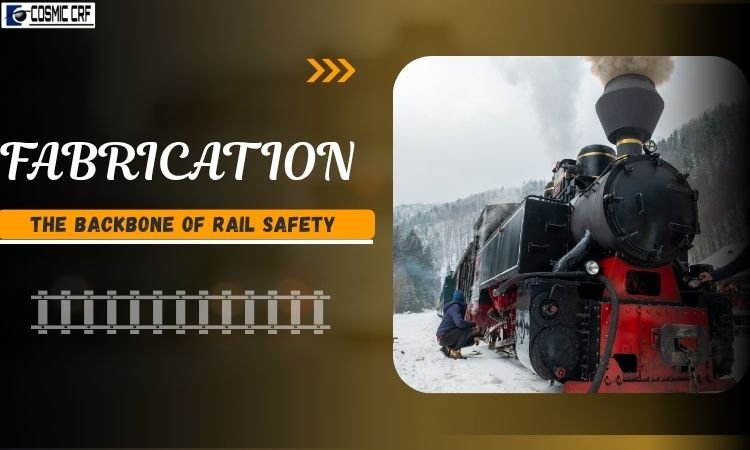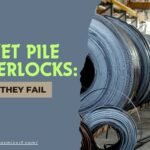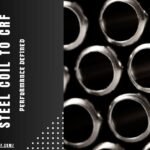Fabrication plays a quiet but central role in rail operations. The plates, joints, brackets, and supports holding a coach together don’t draw attention. But when they fail, everything else stops moving.
Most of these parts don’t make headlines. They’re built to stay out of sight. That makes them easy to overlook—but impossible to replace when something goes wrong.
As trains scale faster, run longer, and cover more mixed terrain, their structure depends more than ever on fabrication quality.
Here’s where advanced manufacturing steps in—with tighter specs, stronger joints, and better material use.
Precision Fabrication Eliminates Fit-Up Errors
Wagon and coach frames leave little room for error. If a side bearer or bracket arrives with inconsistent dimensions, it forces extra work during installation. Misaligned pieces increase weld stress, distort panels, and create weak points.
Fabricated items help sidestep these issues. When made in controlled shops, they come with reliable tolerances and geometry.
A machined solebar cleat, for instance, drops into place without grinding or shifting. That precision reduces downtime in the shop and improves how the coach performs over time.
It also helps keep fatigue in check. Joints with a better fit absorb vibration evenly. They last longer because their stress zones remain predictable and balanced.
Built-in Strength Cuts Weight Without Sacrificing Support
Older rail builds depended on bulk to ensure stability. Newer designs lean toward efficiency—less material, fewer layers, lighter bodies. Fabricated items enable that shift by placing strength where it counts.
Instead of overbuilding every section, engineers now distribute loads using smart geometry.
A fabricated gusset plate or support channel can do the work of a larger cast block—without adding unnecessary mass.
This weight reduction helps improve fuel efficiency for freight, accelerates braking response, and reduces wear on track surfaces. It also supports India’s long-term push for lighter rolling stock with higher axle capacity.
Repeatable Production = Faster Assembly
Every coach assembly line runs on rhythm. When one part varies too much, the whole line starts slipping. That’s why fabricated parts now follow stricter repeatability norms.
Key items like drawgear brackets, headstock reinforcements, and underframe stiffeners often pass through CNC plasma cutters and robotic welders. This keeps geometry sharp, holes consistent, and weld seams aligned.
Such repeatability saves time for welders and assemblers. There’s less trial fitting, fewer corrections, and more certainty across long batches. That pace directly supports higher monthly output targets.
Weld Readiness and Surface Prep Make Coating More Effective
Welding strength isn’t just about filler and voltage. The prep makes a big difference—how clean the edge is, how square the face runs, how smoothly it accepts heat.
Fabricated items that come chamfered, deburred, and pre-aligned allow faster welding with fewer defects. Paint and coating adherence improves too. This is critical in parts exposed to rain, ballast spray, or coastal humidity.
For example, a cross bearer with a rough edge traps more water and dust, leading to faster corrosion.
A cleanly fabricated one stays dry longer and takes primer evenly. That matters more than ever in coastal operations and monsoon-heavy zones.
Safety Outcomes Start with the Fabrication Table
Safety audits in railways often trace accidents back to early-stage misses. A sheared bolt hole, a skewed support plate, or a missed weld can trigger failure much later.
Fabricated components reduce these risks through better documentation, traceability, and dimensional control. Every bracket comes from a jig. Every hole comes from a drawing.
This eliminates guesswork on the plant floor and helps maintain design integrity at scale.
Even when wagons in railway go in for repair, it’s easier to match or replace a fabricated item—because its spec lives in a repeatable format, not just an improvised fix.
Final Thoughts
Every coach or wagon begins on paper, but its real integrity depends on how well each fabricated part performs under stress.
These components guide force, absorb vibration, and help the structure last longer—all while staying out of sight.
Across rail networks, the value of fabrication shows up in fewer breakdowns, tighter inspections, and smoother performance.
That’s why our teams invest effort where it counts—on precision, weld prep, material conditioning, and reliable assembly. When fabrication holds up, the rest of the system moves with confidence.




